Wikipedia: Maramureș is known for its pastoral and agricultural traditions, largely unscathed by the industrialization campaign that had been carried on during Romania's communist period. Plowing, planting, harvesting, and hay making and handling are mostly done through manual labor. The industrial plants built during the communist period heavily polluted the area, but recently, due to the decline of the area's industrial activity, the area is less polluted.
The old and the new transporters co-mingle.
The old and the new transporters co-mingle.
We toured a region of Maramures, concentrating on seeing countryside and strange wooden churches, but first a convenient relief facility is stumbled upon .
Wikipedia: The wooden churches in the Maramureș region of northern Transylvania are a group of almost one hundred Orthodox churches of different architectural solutions from different periods and areas. The Maramureș churches are high timber constructions with characteristic tall, slim bell towers at the western end of the building.
Maramureș is one of the better-known regions of Romania, with autonomous traditions since the Middle Ages. Its well-preserved wooden villages and churches, its traditional lifestyle, and the local colorful dresses still in use make Maramureș as near to a living museum as can be found in Europe.
The wooden churches of the region that still stand were built starting from the 17th century all the way to 19th century. Some were erected on the place of older churches. They were a response to the prohibition against the erection of stone Orthodox churches by the Catholic Austro-Hungarian authorities. The churches are made of thick logs, some are quite small and dark inside but several of them have impressive measures. They are painted with rather "naïve" Biblical scenes, mostly by local painters. The most characteristic features are the tall tower above the entrance and the massive roof that seems to dwarf the main body of the church.
Eight were listed by the UNESCO as World Heritage Sites in 1999, for their religious architecture and timber construction traditions. These are: Bârsana, Budești, Desești, Ieud, Plopiș, Poienile Izei, Rogoz, Șurdești.
Maramureș is one of the better-known regions of Romania, with autonomous traditions since the Middle Ages. Its well-preserved wooden villages and churches, its traditional lifestyle, and the local colorful dresses still in use make Maramureș as near to a living museum as can be found in Europe.
The wooden churches of the region that still stand were built starting from the 17th century all the way to 19th century. Some were erected on the place of older churches. They were a response to the prohibition against the erection of stone Orthodox churches by the Catholic Austro-Hungarian authorities. The churches are made of thick logs, some are quite small and dark inside but several of them have impressive measures. They are painted with rather "naïve" Biblical scenes, mostly by local painters. The most characteristic features are the tall tower above the entrance and the massive roof that seems to dwarf the main body of the church.
Eight were listed by the UNESCO as World Heritage Sites in 1999, for their religious architecture and timber construction traditions. These are: Bârsana, Budești, Desești, Ieud, Plopiș, Poienile Izei, Rogoz, Șurdești.
While navigating, Gerri notices a Google maps reference to a Jewish cemetary a bit off the highway in the hills, so off we explore for it...
...and we find a nice vantage point to view the pastoral small town life.
Because they could at some point? - a more modern stone and metal church next to the old one. We weren't able to enter it, but we're guessing it's far more spacious and comfortable inside.
We noticed everywhere where grasses are cut, they let it grow tall and then harvest it for hay, stacking it on the premises for drying in various ways. Some places are just random grassy areas, while others are purposeful hay fields.
Inside another church, where a cemetary volunteer provided us entry, we find the many colorful decorations.
Then we visit Barsana Monastery - begun in the 14th century, but with some structures as new as 1993.
First peeks, much anticipation...
The ultimate gazebo...
We toured one building which contained old religious relics, as well as handicrafts and typical lodging decorations.
A display typically presented on first entry to a traditional Romanian home - family heirlooms from the looms.
Simple but masterful carved interior features...
Amongst the tower sentinels...
To the right, below, the half moon is captured atop the background church spire (click the photo).
Now inside the main church, the tallest spired structure.
An outside nook where memorial candles are burned - the better for not burning down a wooden church and also keeping soot off wall paintings.
I imagine this all needs continual attention of landscapers, maintainers and gardeners.
One more church elsewhere, this one with unique "sub" spires.
That's a big ladder, and another one of these hanging boards - a mystery to us.
Most every house have elaborate gates - the tour guide said this is all about some distant version of "keeping up with the Jones'".
The touring is mostly done, we head into Sighetu Marmatiei, and park right next to the birthplace of Elie Wiesel, a writer, professor, political activist, Nobel laureate, and Holocaust survivor. He authored 57 books, written mostly in French and English, including Night, a work based on his experiences as a Jewish prisoner in the Auschwitz and Buchenwald concentration camps.
This nail is here, as this city is located at the top of Romania, where when you have the map, a nail would be placed to tack it to a wall.






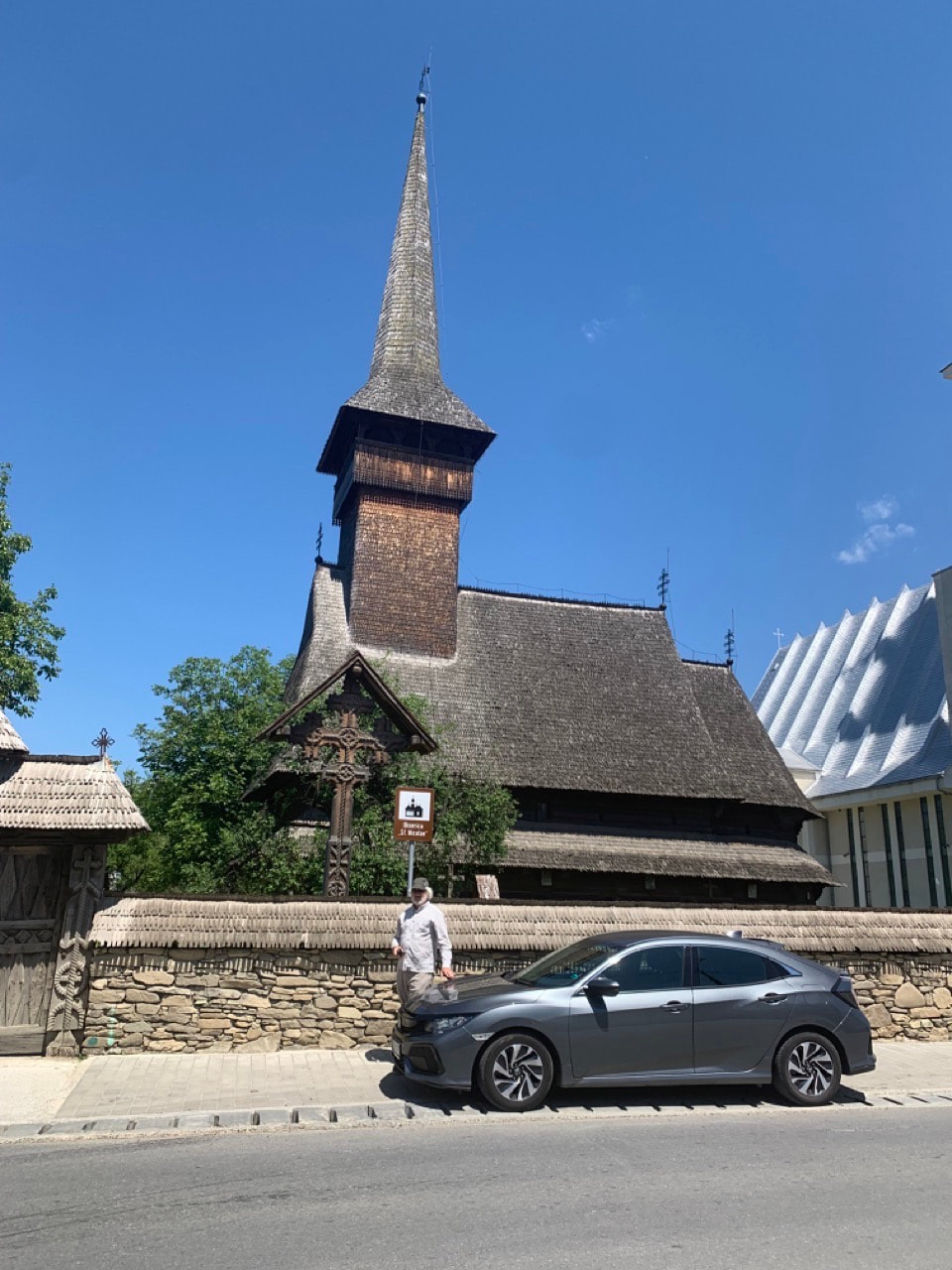

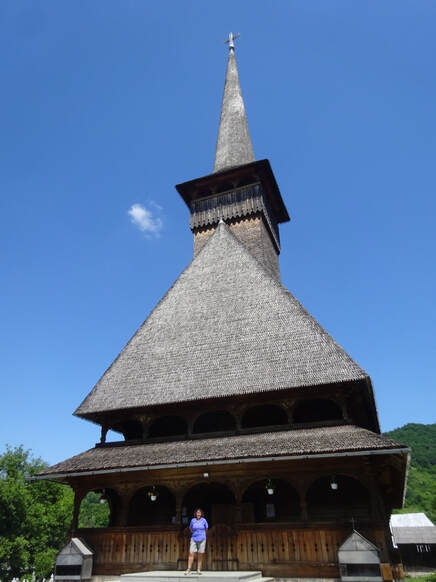


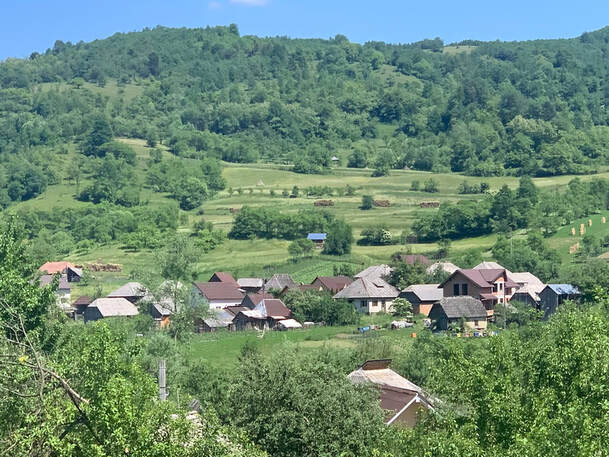



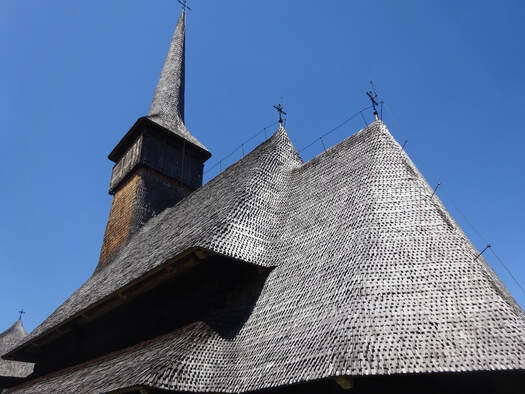


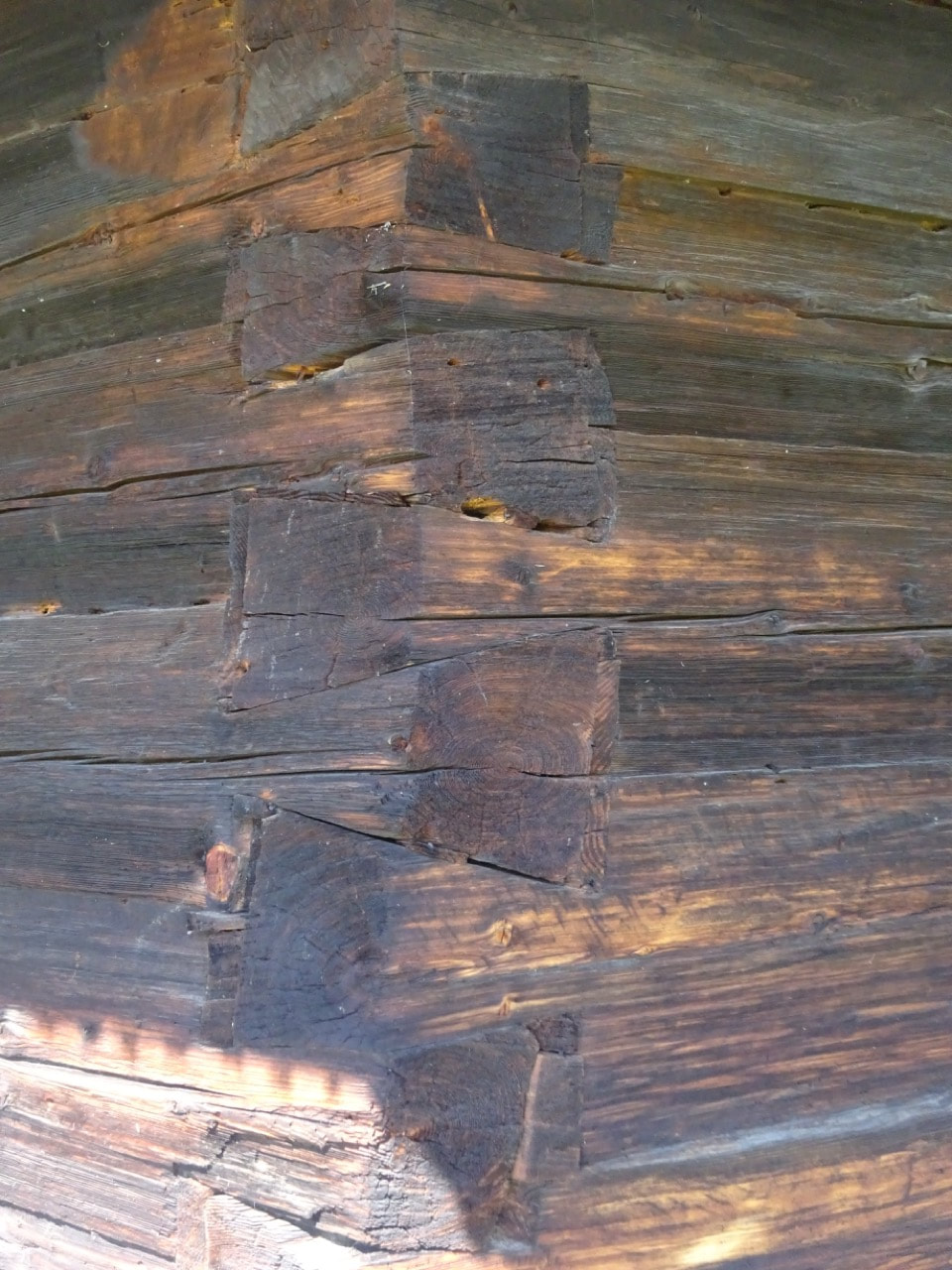
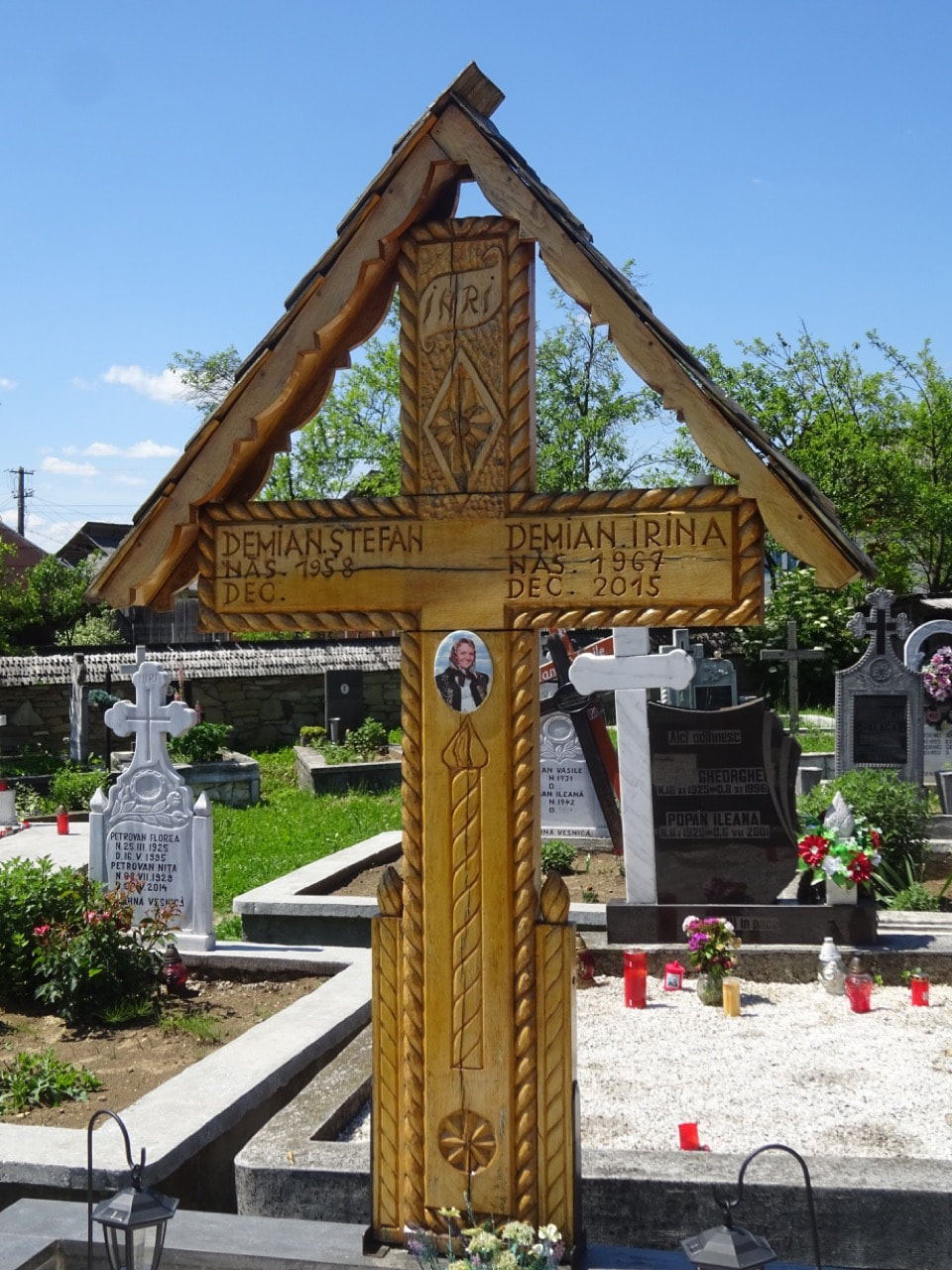






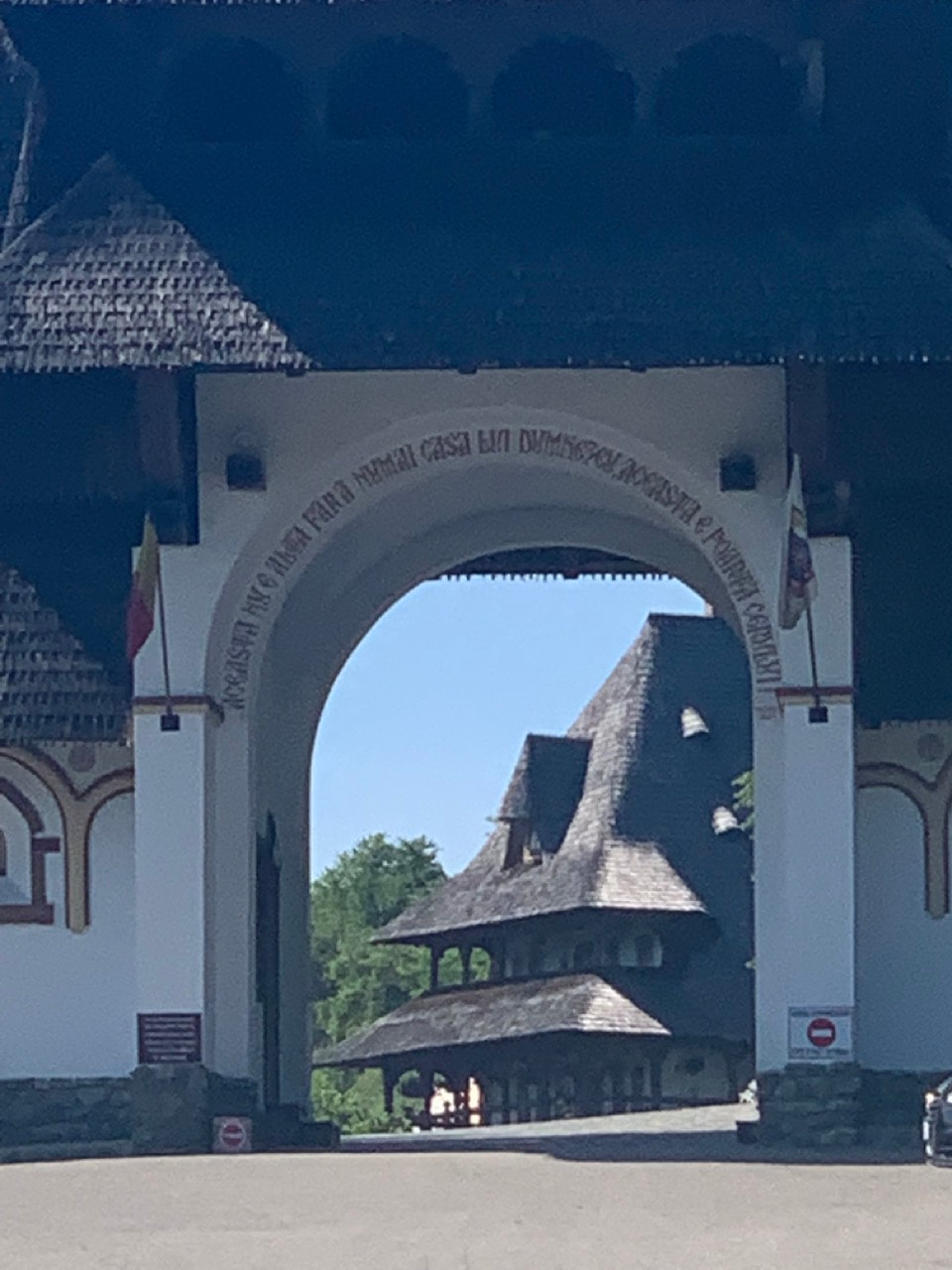




















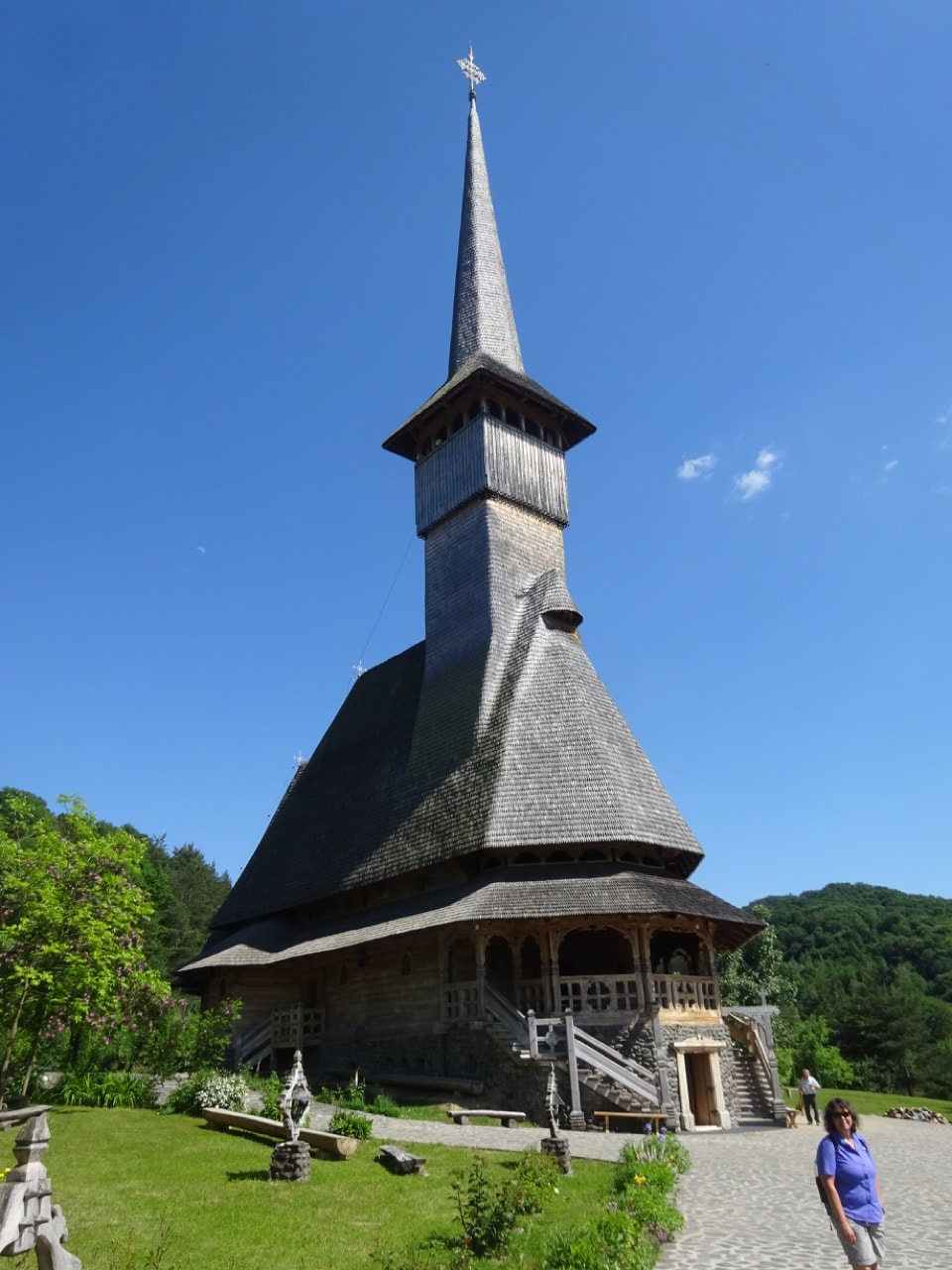

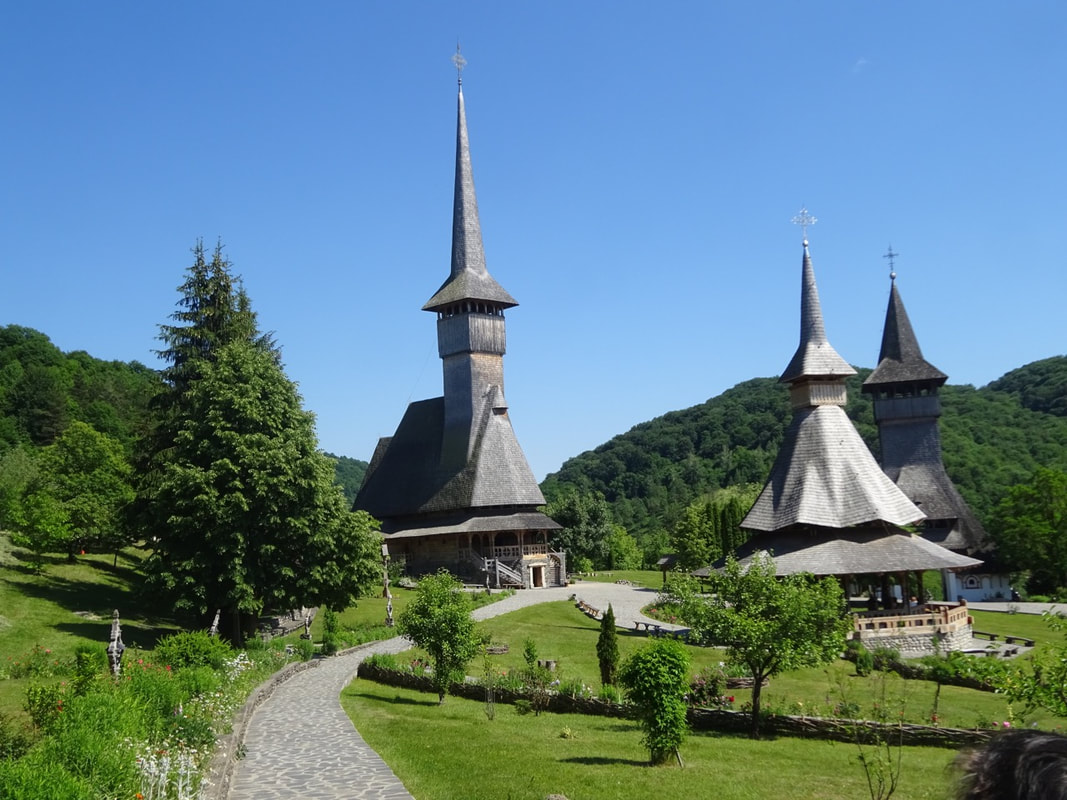



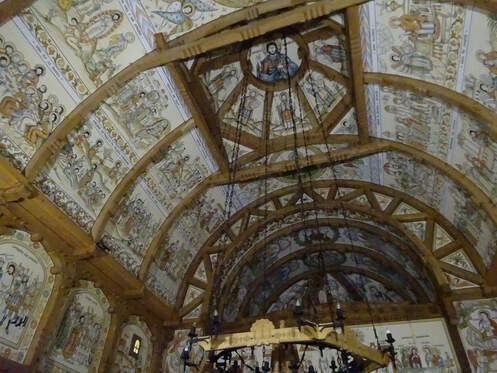



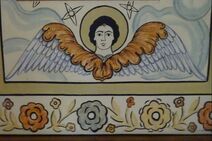









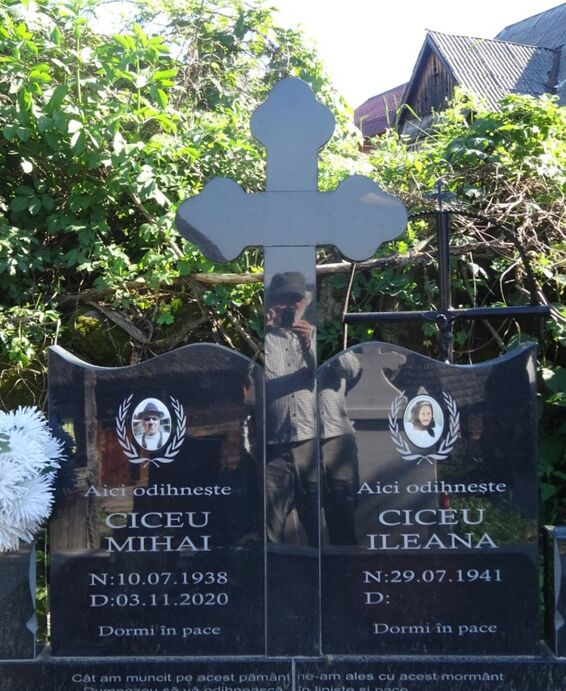





 RSS Feed
RSS Feed
